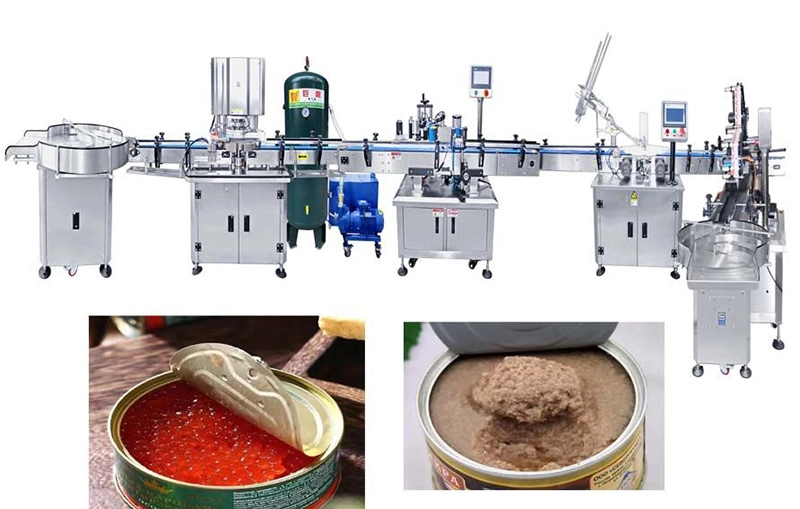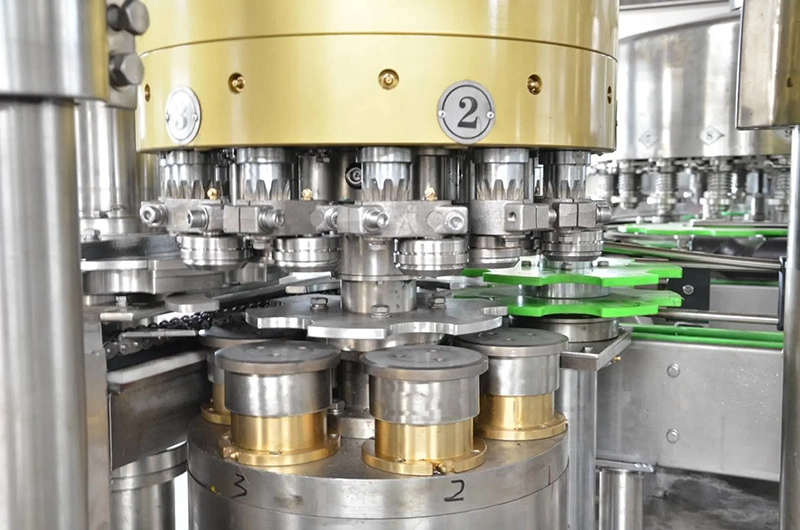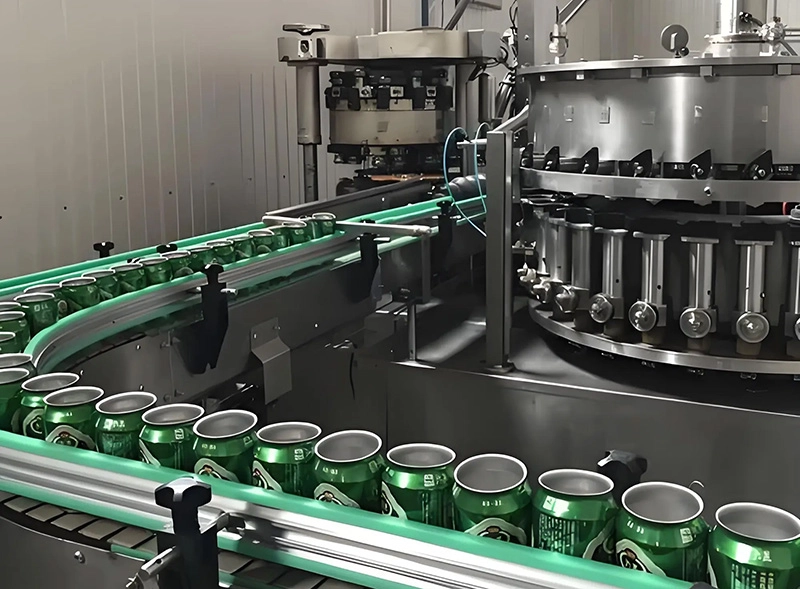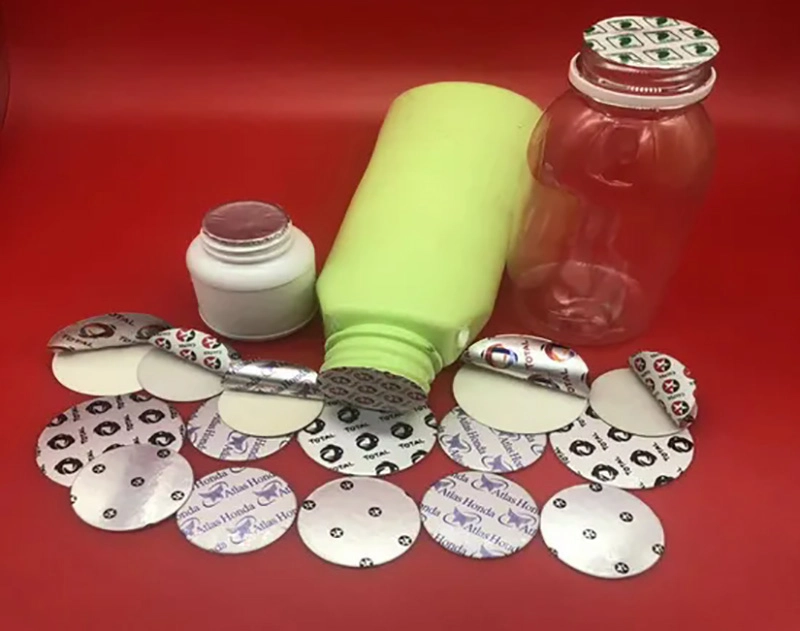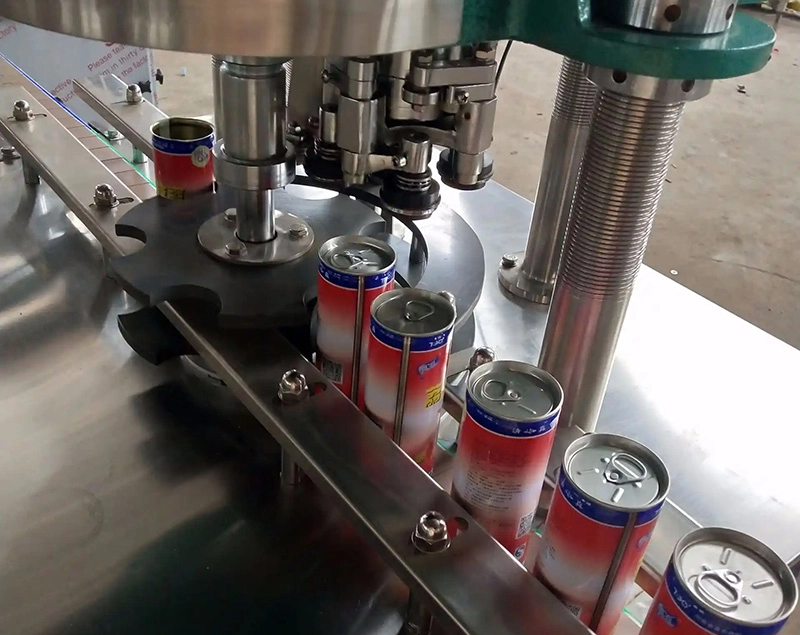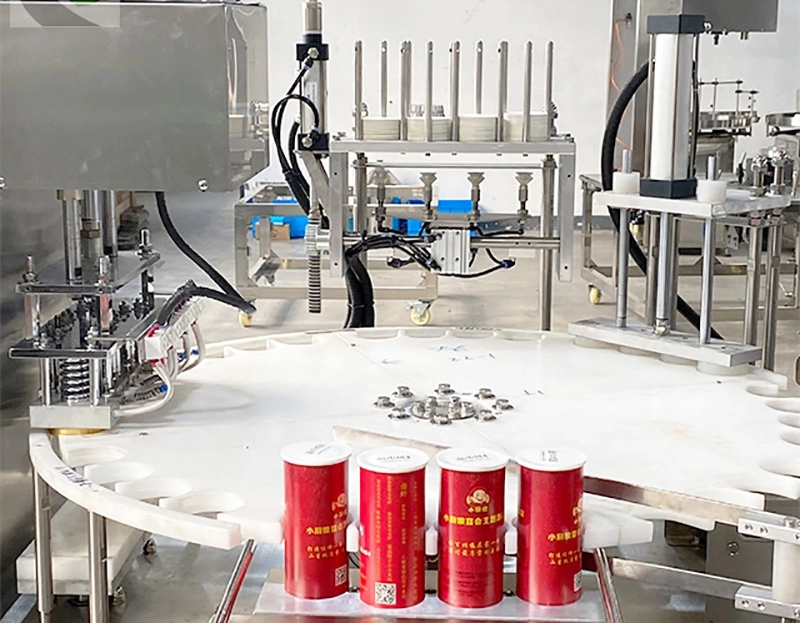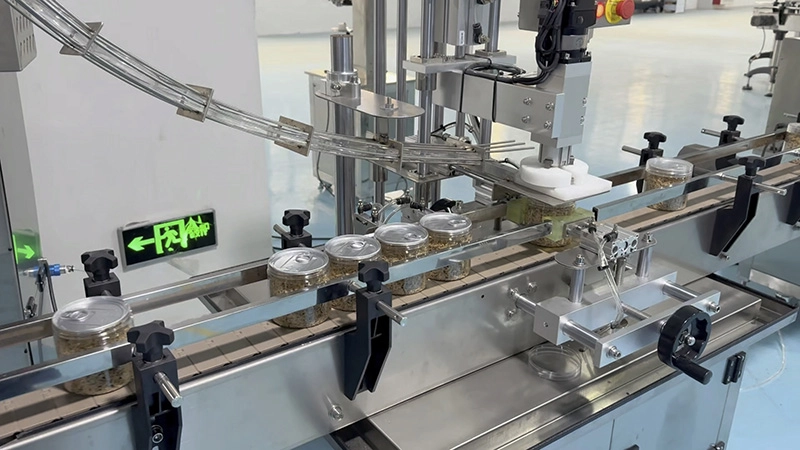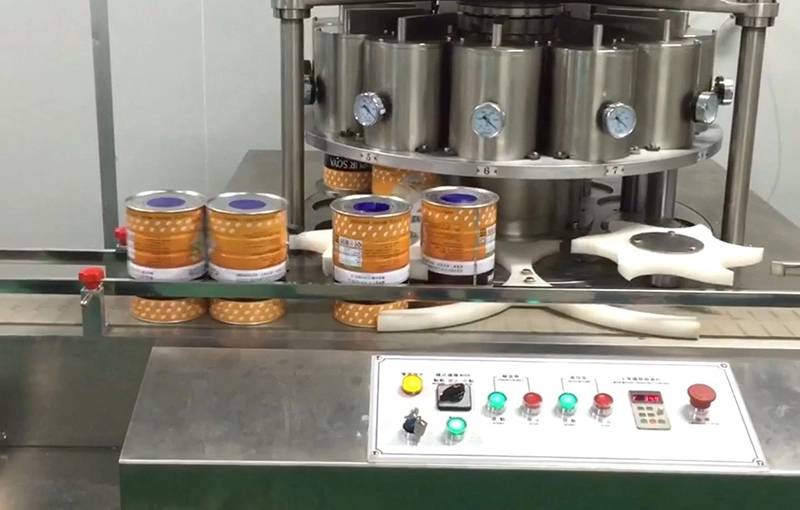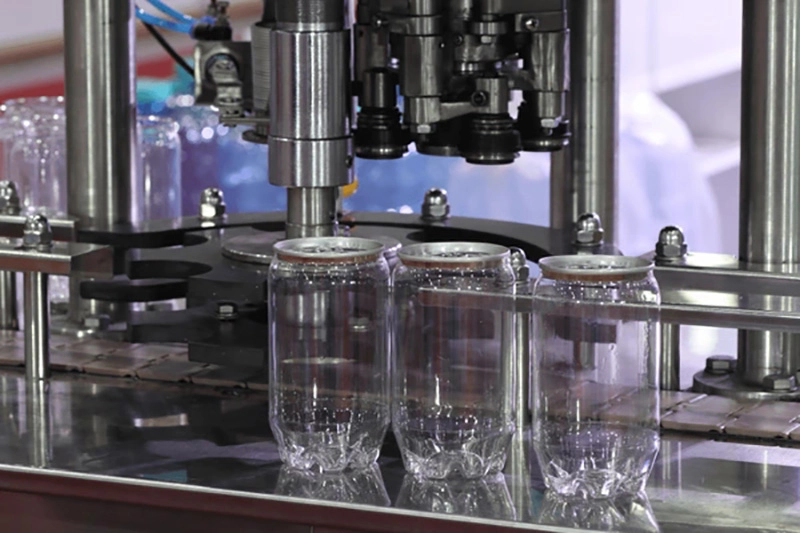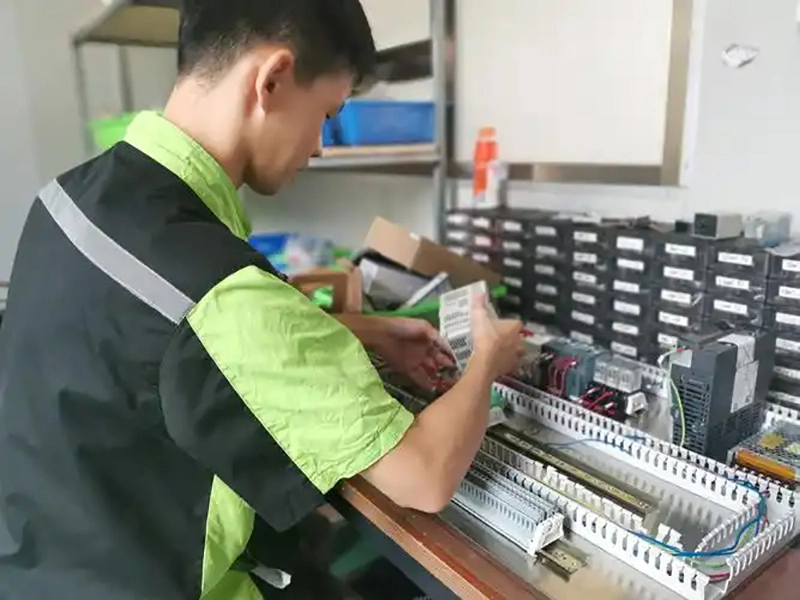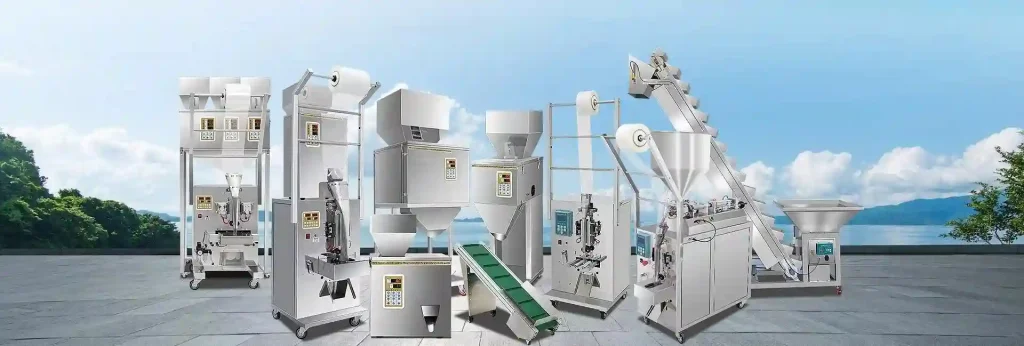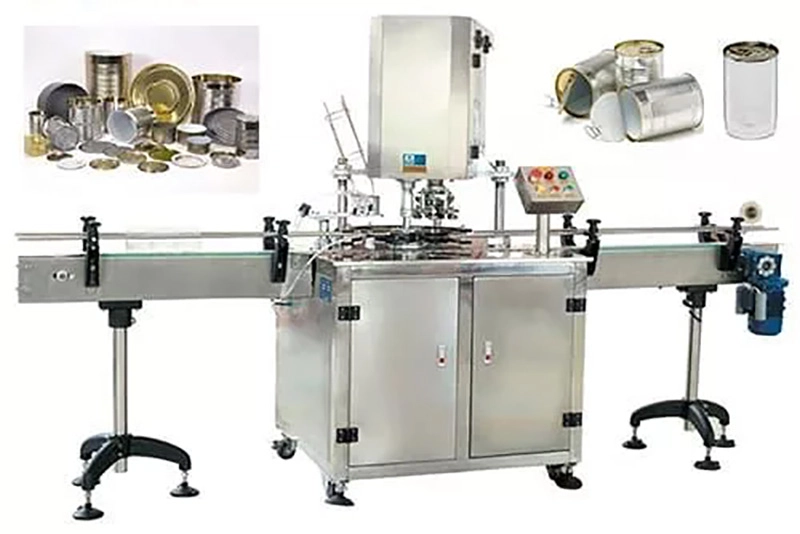1. What is a Can Sealing Machine?
A can sealing machine is core industrial equipment for sealing canned containers in modern production. More than just a tin can sealer or canner sealer, it integrates mechanical engineering, materials science, and automated control into a comprehensive system. From food cans to pharmaceutical packaging and from chemical raw materials to cosmetics, can sealers play an irreplaceable role in ensuring product safety, extending shelf life, and boosting production efficiency.
1.1 Historical Evolution & Technological Advancements
- Early 19th Century:Manual sealing using simple tools (early manual can sealer machine), characterized by low efficiency and poor airtightness.
- Mid-20th Century:The emergence of mechanized sealers with gear-driven semi-automatic processes (for example, early sealing can systems) triggered explosive growth in the canned food industry.
- 21st Century:Dominance of smart, modular designs. IoT-enabled remote monitoring and data optimization are now standard (e.g., KHS Group’s fully automated lines featuring automatic can sealer machines and real-time fault diagnostics).
1.2 Working Principles & Core Value
- Physical Sealing:Pressure rollers create double-seam structures (used in can seamer operations for tinplate cans).
- Chemical Sealing:Utilizes hot-melt adhesives or ultrasonic bonding for composite materials (as seen with sleeve sealer technology in Tetra Pak’s aluminum-plastic film sealing).
- Vacuum/Gas-Flush Sealing:Pre-sealing vacuum or inert gas injection enhances preservation (similar to systems found in soda can sealer machines for potato chip packaging).
Case Studies:
- Infant Formula:Vacuum sealing via a vacuum sealer machine prevents moisture and clumping during transit.
- Beer Cans:Fully automated lines, often referred to as beer can sealing machines, seal 600 cans per minute with integrated leak detection.
2. Key Components & Technical Breakdown
2.1 Power & Transmission Systems
- Servo Motors:Offer 30% more energy efficiency than traditional motors with ±0.1mm precision (ideal for intelligent can sealing machines).
- Harmonic Reducers:Ensure <0.05mm positioning errors for high-precision indexing.
2.2 Smart Control Systems
- Industrial PLCs:The Siemens S7-1500 series supports multi-axis synchronization and stores over 100 can profiles, common in automatic can sealer machines.
- HMI:10-inch touchscreens display real-time pressure, temperature, and speed curves, ensuring optimal operation of the overall sealing machine
2.3 Sealing Execution Units
- Rotary Sealing Heads:
- Pressure Rollers:Coated with tungsten carbide for over 100,000 cycles, suitable for high-volume pop can sealer
- Pressure Control:Hydraulic closed-loop systems adapt to various lid thicknesses (0.15–0.3mm).
- Heat Sealing Modules:
- Heating Bands:Made from nickel-chromium alloy with ±1°C PID control (used in heat sealer machines for aluminum foil juice bottle seals).
2.4 Inspection & Feedback Systems
- Laser Rangefinders:Provide seam height detection with ±0.02mm accuracy and auto-alert for deviations, critical in modern commercial can sealing machines.
- Leak Testers:Utilize pressurization-based detection with 0.5Pa/s sensitivity, mandatory for industries like pharmaceuticals that depend on vacuum sealing machines.
3. Classification & Global Applications
3.1 By Automation Level
- Fully Automated:Integrated with vision-guided alignment (e.g., Keyence CV-X series) and seamlessly connected with filling/labeling lines such as those in bottle sealing machines.
- Semi-Automatic:Priced between ¥80,000–150,000 with an ROI of about 1.5 years (ideal for small-batch operations using manual can sealer machines in niche production).
- Manual:Suitable for lab use and low-volume sealing (such as in specialized tin can sealer for home canning applications).
3.2 By Can Material
- Metal Cans:
- Tinplate:Requires 800N sealing pressure (typical for tin can sealing machines used in fish can production).
- Aluminum:Often features easy-open lids with a 20–30N opening force, conforming to #10 can sealer
- Composite Cans:
- Low-temperature ultrasonic sealing (120–150°C) is used for paper-aluminum-plastic materials, as seen in applications like Nestlé coffee cans processed on can sealing machines for cafe
4. Strategic Value & Economic Benefits
4.1 Food Safety Assurance
- Vacuum sealing machinesextend shelf life to 2–5 years, ensuring military rations and premium food products maintain optimal freshness.
- Compliance with ISO 15378 ensures zero leakage in pharmaceutical applications, highlighting the role of precision can sealer machines.
4.2 Cost Optimization
- Energy Efficiency Comparison:
- Fully automated systems: 15 kW power at 0.3 Wh per can.
- Semi-automatic systems: 3 kW power at 0.8 Wh per can.
- Labor Savings:Fully automated lines, often termed commercial can sealing machines, can reduce operator needs by 15, saving approximately ¥800,000 per year.
4.3 Sustainability
- Material Thinning:Aluminum can walls have been reduced from 0.28mm to 0.20mm, saving up to 200 tons per year for every 1 billion cans produced by modern tin can sealing machines.
- Recyclable Design:Use of water-based PU sealants that comply with EU REACH standards supports environmental sustainability in sealing machines.
5. Decision Framework: Selection & Customization
5.1 Industry-Specific Solutions
Industry | Key Needs | Recommended Machine |
Carbonated Drinks | Pressure resistance (≥6bar) | Rotary fully auto sealer |
Infant Formula | Vacuum (-0.09MPa) + nitrogen | Hybrid vacuum/gas-flush sealer |
Pesticides | Corrosion-resistant (316L) | Semi-auto gas-tight sealer |
5.2 Can Customization Standards
- Aluminum Cans (Ø50–99mm):Sealing pressure should range between 500–1200N (exemplified by Red Bull’s can topper machine with a 25N±3N opening force).
- Glass Jars:Incorporate silicone cushioning to prevent breakage; heat sealing is performed at 180–220°C using specialized jar sealing machines.
5.3 Production Planning Model
- Capacity Formula:Required Output (cans/hour)=Annual Target(Operating Hours×Utilization Rate)\text{Required Output (cans/hour)} = \frac{\text{Annual Target}}{(\text{Operating Hours} \times \text{Utilization Rate})}Required Output (cans/hour)=(Operating Hours×Utilization Rate)Annual Target Example: For 100M cans/year, 4,000 operating hours, and an 85% utilization rate, the line must produce ≥2,941 cans per hour.
- Budget Allocation:
- Equipment: 55%
- Tooling: 20%
- Maintenance: 25%
This model is applicable for various systems ranging from automatic jar sealing machinesto canning jar sealer machines.
6. Multi-Container Compatibility Challenges
6.1 Mechanical Design
- Quick Mold Change (QMC):Hydraulic systems can switch can diameters in just 5 minutes (e.g., from 65mm to 85mm) in advanced paint can sealer
- Adaptive Heads:Utilizing shape-memory alloys (SMA), these systems automatically adjust to different lid curvatures, common in innovative sealer cup machines.
6.2 Material Compatibility
- Plastic Cans:Plasma treatment reduces the PP friction coefficient from 0.25 to 0.12, ensuring smooth operation in cup sealing machines used for various packaging.
- Thermal Expansion:Advanced algorithms in automatic sealing machines compensate for differences between aluminum and tinplate, maintaining consistent sealing quality.
7. Fault Diagnosis & Predictive Maintenance
7.1 Big Data-Driven Predictions
- Control Panel Errors:Regularly reboot or inspect circuit boards for soldering or component failures in your sealer machine.
- Signal Issues:Verify sensor connections; recalibration is recommended for delayed sealing sensors found in high-performance vacuum sealing machines.
- Software Glitches:Restore factory defaults or update firmware as needed; continuous monitoring of PLC status lights is critical in heat sealing machines.
- EMI Shielding:Isolate sensitive components from high-power equipment interference, a best practice in commercial can sealing machines.
- Routine Maintenance:Conduct quarterly cleaning of control cabinets and verify that cooling fans in all automatic can sealer machines are functioning properly.
7.2 Quick-Response Manual
For immediate troubleshooting, refer to the following error codes:
Error Code | Meaning | Recommended Solution |
E201 | Seam height deviation | Inspect rollers and recalibrate sensors on your tin sealer system. |
E307 | Vacuum failure | Replace pump oil and check seals in the vacuum seal machine. |
8. Custom Solutions: Liuzhou Mei Machinery (liuzhoume.com)
8.1 Core Competencies
- 23 patents:Including innovations like the Multi-Can Adaptive canner sealer
- Global Support:Guaranteed response within 24 hours in regions such as Southeast Asia and the Middle East, serving both automatic can sealer machines and manual can sealer machines.
8.2 Success Story
Probiotics Packaging:
- Challenge:Achieving -40°C sealing for live cultures using advanced vacuum sealing machines.
- Solution:Implementation of a stainless steel anti-freeze design with low-temperature lubrication.
- Result:Leakage rates reduced from 3% to 0.02%, resulting in annual savings of ¥12M.
9. Future Trends
- Smartization:AI-powered vision systems are beginning to replace manual quality control, achieving up to 99.9% defect interception in next-generation can resealer
- Miniaturization:The trend toward desktop and tin can sealer for home canning devices is on the rise, catering to DIY and small-batch production.
- Green Tech:The development of biodegradable sealants is expected by 2025, aligning with the evolution of eco-friendly sealing machines.
To Decision-Makers: Choosing the right can sealing machine is a strategic investment in supply chain security and brand integrity. Liuzhou Mei Machinery (liuzhoume.com) delivers complete lifecycle solutions—from single machines like bottle sealing machines to integrated smart factory systems.
Act Now: Visit liuzhoume.com for a free consultation—our engineers respond within 1 hour!

